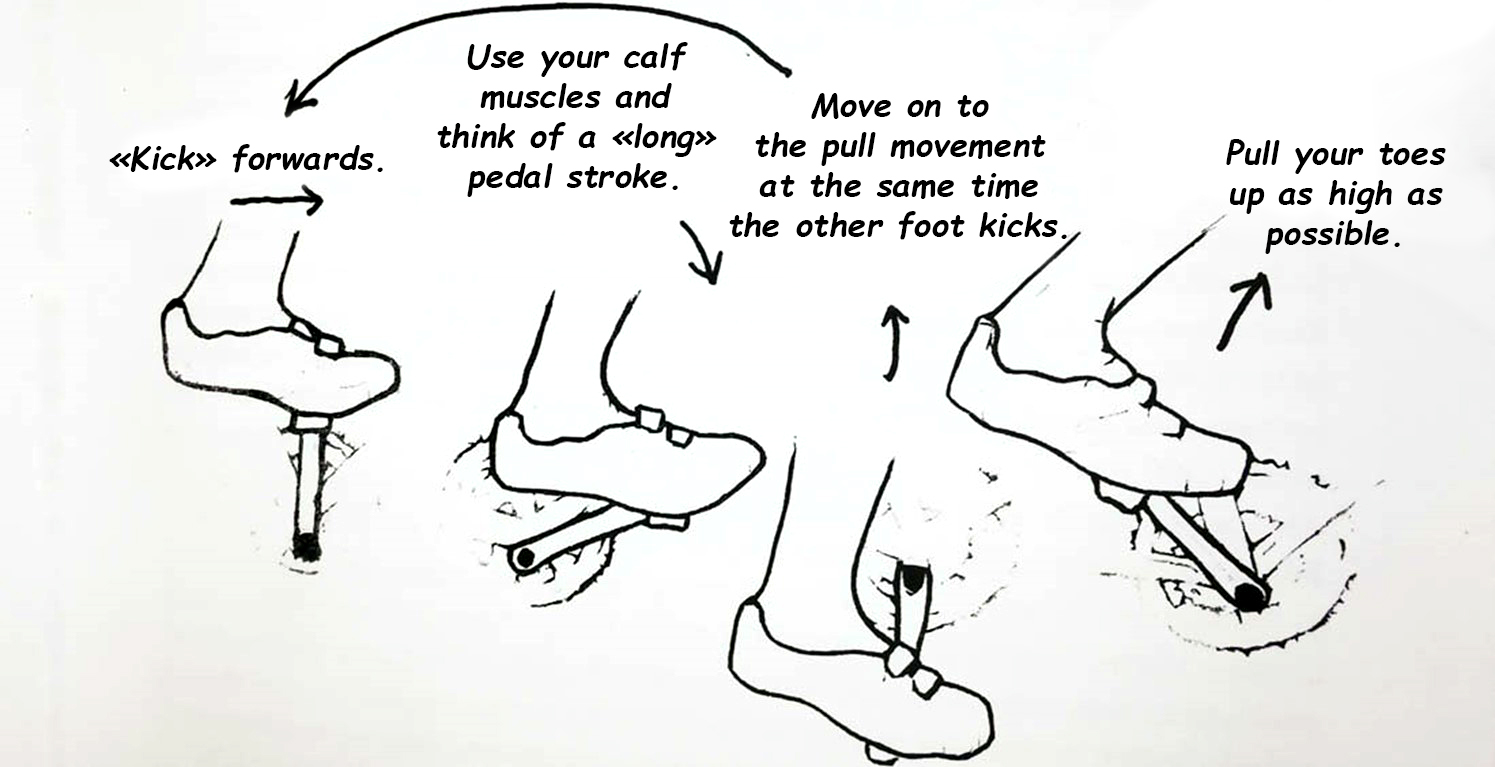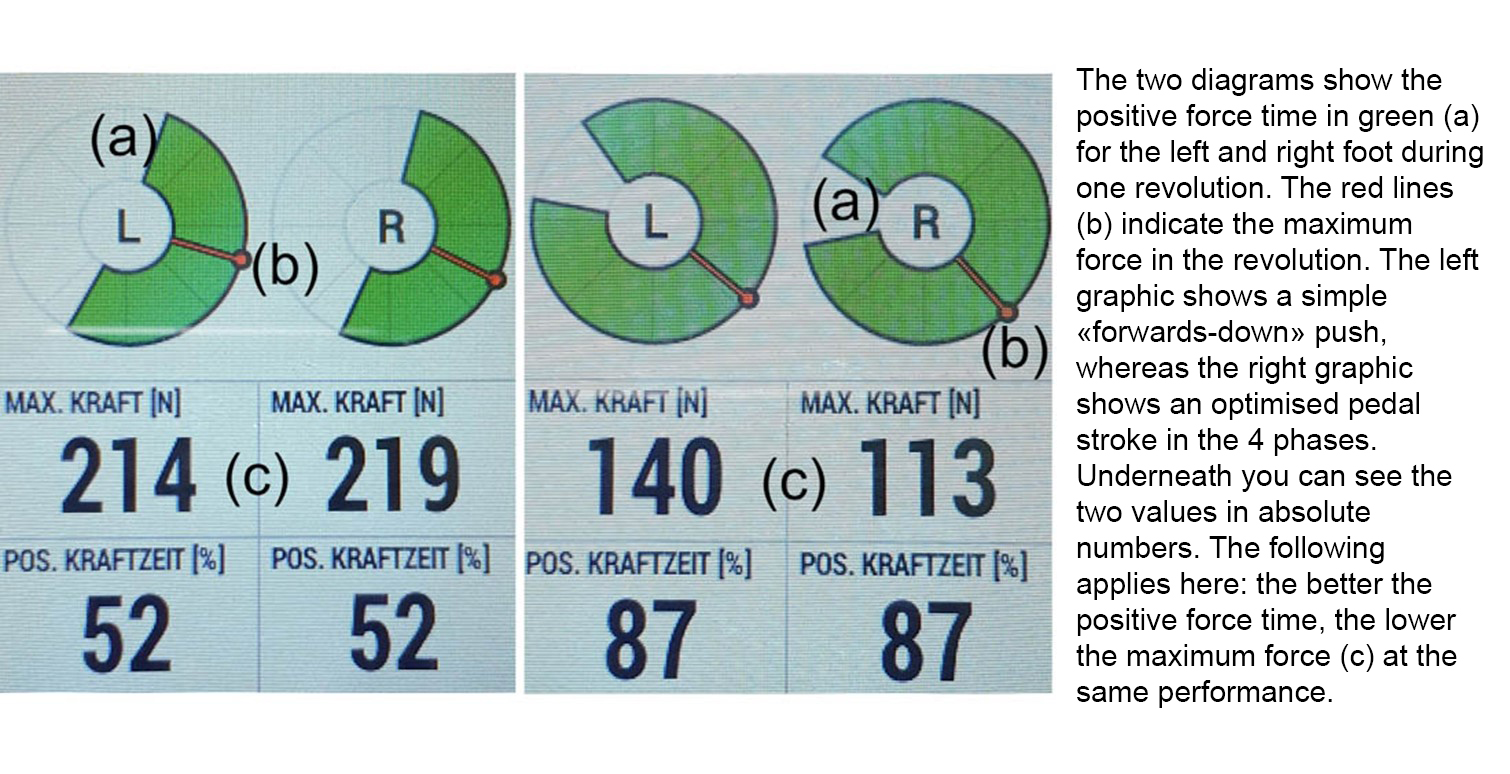
«Figuring out» the correct pedal stroke
Foto: iStock.com/nattrass
If you master every rotation perfectly, you will achieve a lot more and naturally get tired much later. But how exactly does the correct pedal stroke work?
This article is presented by Medical Running
Cycling is just physics after all and has to be learnt. The pedal revolution on a normal bicycle is only directed forwards and down. However, if you now cycle with click pedals, you should use them wisely. The rotation can be optimally controlled with different muscles, so that your performance improves without infinitely increasing the strain. If only the pedal is pushed forwards and down, a great deal of the leg muscles’ potential will fall by the wayside.
The whole revolution is divided into these 4 main phases:
The overstroke phase (red), the push phase (yellow), the pull phase (green) and finally the upstroke phase (blue).
The leg muscles need to work optimally in these 4 phases. The inter- and intramuscular coordination must be correct to ensure a round movement. The pedalling needs to be powerful and energy-efficient at the same time.
The individual muscles work as follows (imagine an analogue clock):
- The anterior thigh muscles (blue/purple – VL/VM) kick over at the top and push forwards and down (11 to 4 o'clock).
Exception: the rectus femoris (green - RF) works as a hip flexor and starts earlier, pulling backwards and up to 11 o'clock (starting at 9 o'clock). - The big gluteal muscle (red - Gmax) pushes down at the front (12 to 5 o'clock).
- The posterior thigh muscles (orange/pink – BF/SM) push down at the front and pull back at the bottom (2 to 7 o’clock).
- The calf muscles (salmon/light green/light blue – GM/GL/SOL) push down at the front and pull back at the bottom (2 to 8 o'clock).
- The foot lifter muscle (dark green - TA) pulls backwards and up (8 to 1 o'clock).
«Kick it like Obree»
Graeme Obree explains in his book (The Obree Way: A Training Manual for Cyclists) exactly how to optimally train the rotation. His technique starts at 12 o'clock, where it begins with a forward kick movement of the foot (activation of the anterior thigh muscles). The calf muscles are then additionally activated, forming a long forwards and down pedal stroke. This is followed by the pull movement, which is triggered at the same moment the kick movement starts on the opposite side. Finally, the foot is pulled up before it starts kicking forwards again.

Increase your positive force time
If the pedal rotation can be actively driven over a larger spectrum, the maximum force load decreases. The muscles will tire less quickly at the same performance.

This may be of interest for you too


